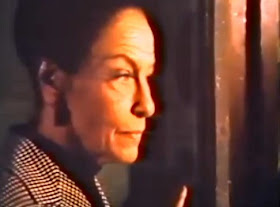 |
| Hank Stratton and Helen Hunt |
MURDER IN NEW HAMPSHIRE: THE PAMELA WOJAS SMART STORY (1991 telefilm). Director: Joyce Chopra.
Pamela Smart (Helen Hunt) is the media director of a high school in New Hampshire. She begins work on a project with several teens, and begins an affair with one of them, 15-year-old Billy Flynn (Chad Allen). Pamela assures Billy that her love for him is genuine, but that her supposedly abusive husband, Gregg (Hank Stratton) will make her life miserable if she divorces him. Pamela importunes Billy, with the help of some friends, to murder Gregg, and after some agonizing, he does. Pam is sure that the police will never figure out her involvement, but people, after all, will talk ...
 |
| Chad Allen as killer Billy |
Murder in New Hampshire is based on real-life events, some of which were later fictionalized in the film
To Die For. This is a fairly standard TV movie with some good acting, but it is never what you could call riveting film-making. Allen, who was 17 at the time, probably makes the best impression as the gullible Billy, although there is good work from Stratton and from Ken Howard and Michael Learned as Gregg's parents. Hunt is also good, but she doesn't get across the hardness and sheer dumb dead-commonness of Pamela Smart. Chad Allen, who is openly gay, later appeared in the film
Save Me (along with many others), and again proved what a fine actor he is.
 |
| Hank Stratton as Gregg Smart |
Smart, who is serving a life sentence, was recently interviewed on
Dateline. She maintains her innocence to this day, and refuses to show remorse or admit her guilt, two things she must do if she ever wishes to be paroled. (Flynn and the other boys have all been paroled.) She downplays the fact that she had an affair
with a minor, a fact that might well have sealed her fate even if she were, improbably, innocent. The point was made, as it should be, that the true victim in this is Gregg Smart, who by all accounts was a perfectly nice guy. Joyce Chopra later directed a somewhat better telefilm,
The Danger of Love, which was about another sociopathic lady, Carolyn Warmus, who murdered her boyfriend's wife. Not surprisingly, Smart and Warmus became friends in the penitentiary!
Verdict: Fair-to-middling TV version of a fascinating case. **1/2.

































